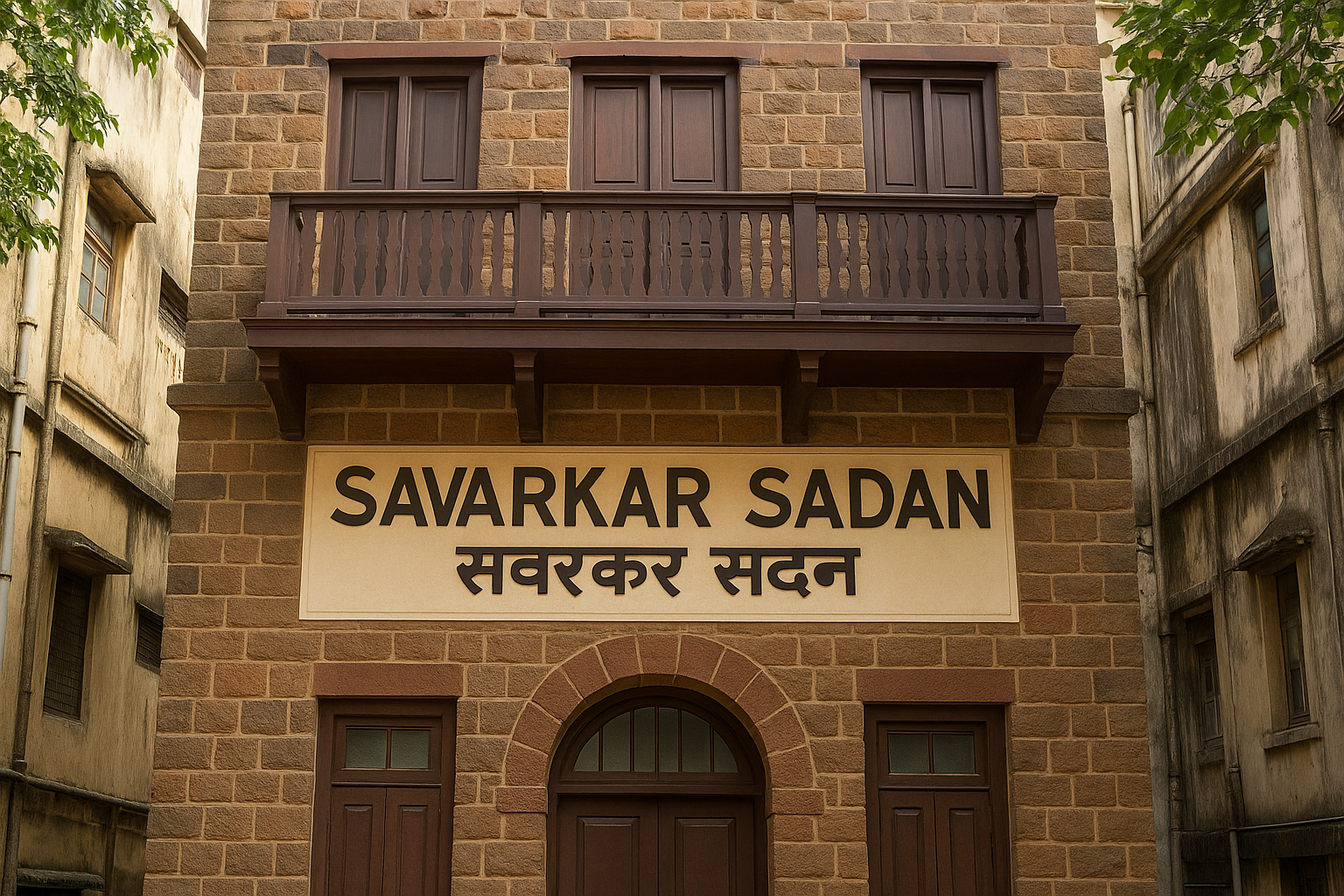Heritage Status for Savarkar Sadan: Preserving Mumbai’s Legacy
A proposal for Savarkar Sadan heritage status in Mumbai has been submitted, aiming to protect the legacy of freedom fighter Veer Savarkar. The iconic residence, rich in historical significance, could soon be recognized as a cultural landmark.
What is Savarkar Sadan?
Savarkar Sadan is a two-storey building located in the Shivaji Park area of Mumbai. It was once home to the family of Vinayak Damodar Savarkar, more widely known as Veer Savarkar. He was a well-known freedom fighter, writer, and political thinker — someone who left a deep mark on India’s history. The house has seen not only key moments in the Indian freedom movement but also served as a hub for social and political discussions during Savarkar’s time.
Why is This House So Important?
Imagine walking through a building where ideas that shaped modern India were once shared. That’s what makes Savarkar Sadan special. It hasn’t just stood witness to the past; it actively took part in it.
The building still preserves many items belonging to Savarkar — books, personal photographs, and furniture that tell stories history books can’t fully capture. It’s a silent storyteller of India’s path to independence, making it a strong candidate for heritage status.
What’s the Latest Development?
Recently, a PIL (Public Interest Litigation) was filed in the Bombay High Court asking that Savarkar Sadan be recognized as a heritage structure under Mumbai’s Development Control and Promotion Regulations (DCPR-2034). This move hopes to safeguard the building from any kind of future demolition or drastic changes.
The petitioner, Umesh Bagade — a professor with a keen interest in preserving history — argues that it’s time we officially protect structures like Savarkar Sadan, which hold cultural and historical importance. The case brings up an important question: How do we treat places tied to our national identity?
Who Was Veer Savarkar?
If you’re wondering why this house matters so much, let’s take a quick look at the man behind the name.
- Veer Savarkar was a revolutionary freedom fighter who actively fought against British colonial rule.
- He was also a scholar, poet, and lawyer, often writing about patriotism and self-reliance.
- His book “The First War of Indian Independence” gave the 1857 rebellion a nationalistic twist, calling it more than just a mutiny.
- Savarkar even spent years in prison for his revolutionary activities, including the infamous Cellular Jail in Andaman and Nicobar Islands.
His contribution might be debated in political circles today, but there’s no denying his role in shaping pre-independent India.
Why Heritage Status Matters
You might be thinking, “So what exactly does ‘heritage status’ mean?” Great question! In simple terms, giving a building heritage status means that the government recognizes it as historically valuable and will take steps to preserve it.
This status can:
- Protect the building from demolition or redevelopment
- Ensure funds for restoration and upkeep
- Help educate future generations through preservation and guided tours
Think of it like saving a family heirloom. You’d want your grandkids to know where they came from, right? The same logic applies here. Preserving structures like Savarkar Sadan helps pass on India’s cultural DNA.
Current Condition of Savarkar Sadan
While the structure still stands firm, time has left its mark. According to reports, parts of the building are slowly wearing down, and without proper restoration, its legacy could eventually fade into dust. That’s why advocates argue that heritage status must be granted sooner rather than later — before it’s too late.
Other Sites That Received Heritage Status
Savarkar Sadan isn’t alone in its bid for recognition. Mumbai is home to several heritage buildings like:
- Chhatrapati Shivaji Maharaj Terminus (CST) – A UNESCO World Heritage site
- Gateway of India – Iconic arch by the sea
- Town Hall (Asiatic Society Library) – Known for its classic architecture
Each of these structures showcases different parts of Mumbai’s journey through time. Isn’t it only fair that a landmark like Savarkar Sadan, with its freedom-fighting legacy, finds a spot on that list?
What Can You Do?
Change usually starts with a conversation. If you care about historical preservation, here are a few simple ways to get involved:
- Visit and learn – Take a trip to heritage sites and learn their stories
- Share on social media – Talk about their importance to spread awareness
- Support petitions that aim to protect cultural landmarks
You don’t have to be a historian to care about history. Even sharing this blog post can help shine a light on the issue.
The Road Ahead
As the legal process moves forward, the future of Savarkar Sadan is still uncertain. But this much is clear — it deserves a place in history, not just in books, but in the very foundations of Mumbai.
If the court grants heritage status, it will not only safeguard the building but also offer a chance for schools, tourists, and citizens to connect with an important chapter of our past.
Final Thoughts
History isn’t just about dates and events — it’s about the places that bring those stories to life. Savarkar Sadan is one such place. Whether you see Veer Savarkar as a hero, a thinker, or simply a part of our shared heritage, this house stands as a reminder of India’s journey toward independence.
So the next time you’re near Dadar, maybe take a stroll past Savarkar Sadan. Who knows? You might just feel the echoes of history whispering through its old walls.
Let’s keep the past alive — not just in our minds, but in the landmarks that shaped it.


